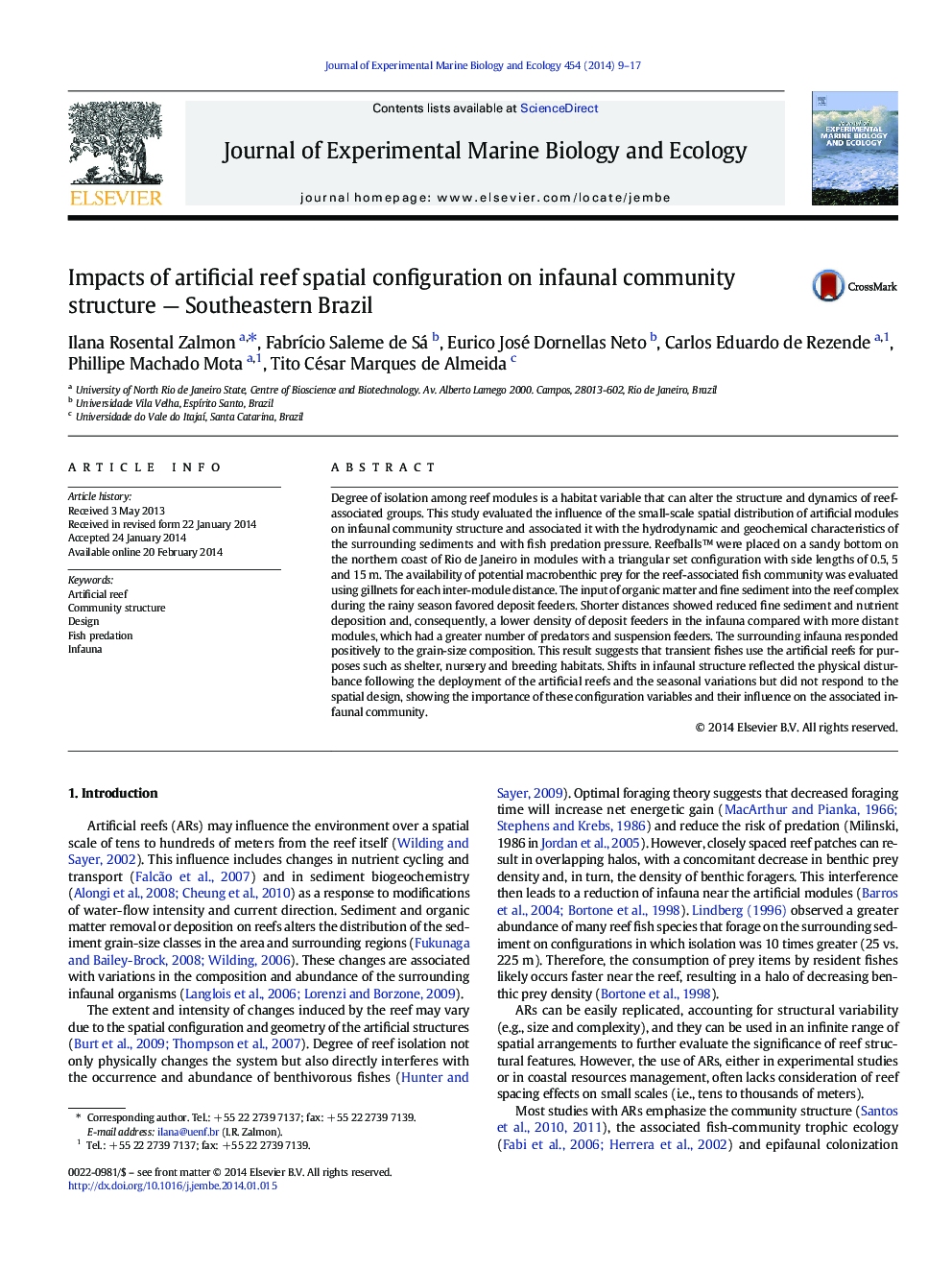| Article ID | Journal | Published Year | Pages | File Type |
|---|---|---|---|---|
| 4395591 | Journal of Experimental Marine Biology and Ecology | 2014 | 9 Pages |
•We evaluate the small-scale spatial distribution of artificial modules on the infauna community.•We associate it to hydrodynamic and geochemical characteristics and to fish predation pressure.•The infauna responded to the grain-size composition variation related to intense current velocity.•The transient fishes didn’t use the artificial reefs for predation on the surrounding infauna.•The infauna reflected the artificial reef impact in a periodic environmentally-disturbed system.
Degree of isolation among reef modules is a habitat variable that can alter the structure and dynamics of reef-associated groups. This study evaluated the influence of the small-scale spatial distribution of artificial modules on infaunal community structure and associated it with the hydrodynamic and geochemical characteristics of the surrounding sediments and with fish predation pressure. Reefballs™ were placed on a sandy bottom on the northern coast of Rio de Janeiro in modules with a triangular set configuration with side lengths of 0.5, 5 and 15 m. The availability of potential macrobenthic prey for the reef-associated fish community was evaluated using gillnets for each inter-module distance. The input of organic matter and fine sediment into the reef complex during the rainy season favored deposit feeders. Shorter distances showed reduced fine sediment and nutrient deposition and, consequently, a lower density of deposit feeders in the infauna compared with more distant modules, which had a greater number of predators and suspension feeders. The surrounding infauna responded positively to the grain-size composition. This result suggests that transient fishes use the artificial reefs for purposes such as shelter, nursery and breeding habitats. Shifts in infaunal structure reflected the physical disturbance following the deployment of the artificial reefs and the seasonal variations but did not respond to the spatial design, showing the importance of these configuration variables and their influence on the associated infaunal community.
